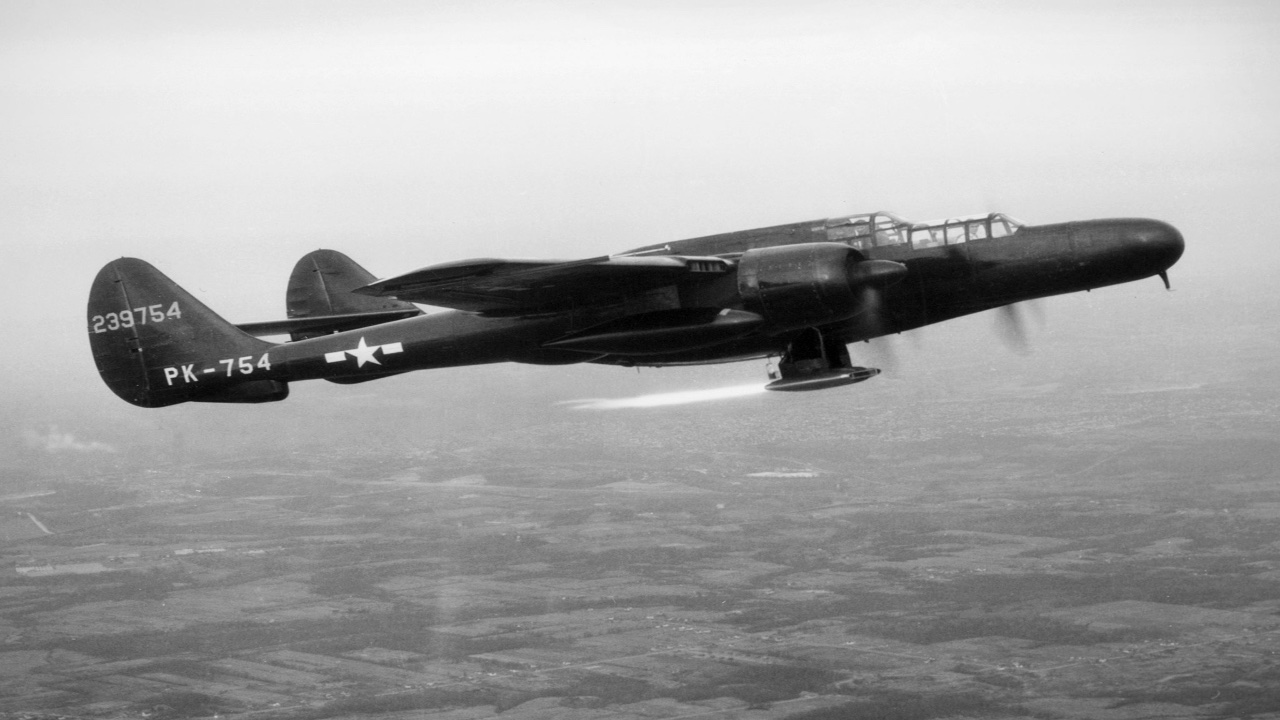
The P-61 Black Widow Was a Night Predator
Though it came late to the Second World War, the P-61 marked an important advance in the history of military aviation.
During the final years of World War II, several advances in military technology changed the course of aviation evolution. One interesting design that emerged at the end of the war was Northrop’s P-61 Black Widow, which combined cutting-edge radar with a formidable armament, ensuring the Black Widow lived up to its lethal name. This was a plane designed to dominate the night skies over war-torn Europe and Asia.
Back in the early phases of America’s involvement in World War II, the United States Army Air Forces (USAAF) recognized the need for a dedicated night fighter to counter enemy bombing raids conducted under the cover of darkness.
The History of the Black Widow
In 1940, the USAAF issued a requirement for a high-performance aircraft capable of operating at night, equipped with radar to locate targets in low-visibility conditions. Northrop Corporation, a relatively new player in military aviation, responded with a bold design that would become the P-61.
The P-61 was a large, twin-engine aircraft with a distinctive twin-boom configuration, resembling a scaled-up version of the Lockheed P-38 Lightning. Its design incorporated several innovative features for its time. The Black Widow was significantly larger than most fighters of the era, allowing it to carry heavy radar equipment, a robust armament, and a crew of three: a pilot, a radar operator, and a gunner.
The P-61’s Specs
Powered by two Pratt & Whitney R-2800 Double Wasp engines, each producing 2,000-horsepower, the P-61 could reach speeds of up to 366 miles per hour and had a range of approximately 1,350 miles, making it suitable for long-range night operations.
One feature of the P-61 was its revolutionary SCR-720 airborne interception radar, a sophisticated system that allowed the crew to detect and track enemy aircraft in complete darkness. The radar was housed in the nose of the aircraft, and the radar operator, seated behind the pilot, used it to guide the pilot toward targets.
The P-61’s armament was equally formidable, consisting of four 20mm Hispano cannons mounted in the belly and a remotely controlled dorsal turret with four .50-caliber machine guns, operated by a gunner.
That combination of radar and firepower made the Black Widow a deadly opponent in nighttime engagements.
The Black Widow saw action in both the European and Pacific Theaters of World War II beginning in 1944. Its first operational units were assigned to the Pacific, where it was used to intercept Japanese aircraft during nocturnal raids. The Black Widow’s radar proved invaluable in locating enemy bombers and fighters, which often relied on darkness to evade Allied defenses.
In Europe, P-61s were deployed with units such as the 422nd and 425th Night Fighter Squadrons, where they patrolled the skies over France, Germany, and the Low Countries, protecting Allied forces from Luftwaffe night attacks.
A notable achievement for the Black Widow was its role in countering the German V-1 “buzz bomb” campaign. Stationed in England, Black Widow crews used their radar to track and destroy these fast-moving, pilotless weapons, which posed a significant threat to London and other Allied targets. The P-61’s ability to operate effectively at night gave it a critical edge in this role, as V-1s were often launched under the cover of darkness to avoid detection.
Despite its advanced technology, the P-61 faced challenges in combat. Its large size and weight made it less maneuverable than smaller, single-engine fighters, and early models suffered from technical issues with the radar and turret systems.
The P-61’s Record of Service
Additionally, by the time the P-61 entered widespread service, the Luftwaffe’s night bombing campaign had largely diminished, and Japanese air forces were also on the defensive, reducing the number of opportunities for the Black Widow to engage enemy aircraft.
Nevertheless, the P-61 proved effective in ground-attack roles, using its cannons and machine guns to strafe enemy positions and supply lines, particularly in the Pacific.
By the war’s end, the P-61 was credited with numerous kills, including aircraft and V-1s, and had earned a reputation as a reliable and versatile night fighter. Its crews praised its stability and firepower, though some noted its complexity compared to other aircraft of the era.
The Northrop P-61 Black Widow’s operational career was relatively short, as jet-powered aircraft began to dominate military aviation shortly after the Second World War. By the late 1940s, the P-61 had been phased out of frontline service, replaced by newer designs, such as the North American F-82 Twin Mustang and early jet fighters.
This plane laid the groundwork for future night and all-weather fighters. Its use of airborne interception radar influenced the development of post-war aircraft, such as the F-86D Sabre and F-4 Phantom II, which relied on radar for both air-to-air and air-to-ground missions. The Black Widow also demonstrated the importance of specialized aircraft for niche roles, a concept that would shape the design of future fighters and interceptors.
The Black Widow’s Lasting Impact
Beyond its technological innovations, the P-61 holds a cultural legacy as one of the most distinctive aircraft of the Second World War. Its sleek, menacing appearance and evocative name made it a favorite among aviation enthusiasts.
Surviving P-61s are today preserved in museums, such as the National Museum of the United States Air Force in Dayton, Ohio. These aircraft serve as a testament to the ingenuity and determination of the engineers and crews who developed and flew them.
Although the P-61’s operational impact was limited because of its late introduction into the war, the P-61’s innovations in radar-guided combat and night-fighting tactics left a lasting mark on military aviation.
About the Author: Brandon J. Weichert
Brandon J. Weichert, a Senior National Security Editor at The National Interest as well as a contributor at Popular Mechanics, consults regularly with various government institutions and private organizations on geopolitical issues. Weichert’s writings have appeared in multiple publications, including The Washington Times, National Review, The American Spectator, MSN, The Asia Times, and countless others. His books include Winning Space: How America Remains a Superpower, Biohacked: China’s Race to Control Life, and The Shadow War: Iran’s Quest for Supremacy. His newest book, A Disaster of Our Own Making: How the West Lost Ukraine, is available for purchase wherever books are sold. He can be followed on Twitter @WeTheBrandon.
Image: NASA Glenn Research Center / Wikimedia Commons / Public Domain.
The post The P-61 Black Widow Was a Night Predator appeared first on The National Interest.

















